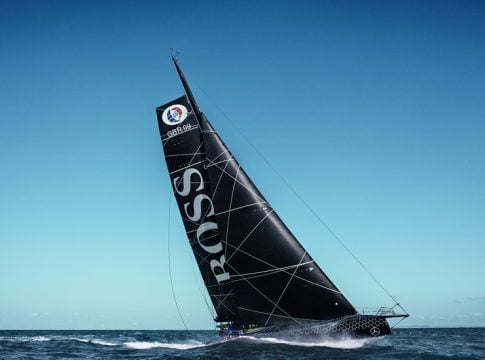Italy-based classification society RINA has launched a series of new services and standards aimed at helping the growing global yacht industry to grow efficiencies and reduce its environmental footprint.
The five new services being rolled out in the last quarter of 2015 are a Global Compliance certification for boats to show they meet both US and EU standards, a set of courses and certification for Marina Managers, Electromagnetic Interference & Hazard Evaluation, a new class notation for yachts that measures the environmental impact of the whole life cycle of the yachts and new rules for a more extensive use of glass on the hull and superstructure.
Paolo Moretti, General Manager Marine, RINA Services, says, “The global yacht industry is growing strongly and is very diverse. These new services are a demonstration of our intention to provide useful services and standards to every sector of the industry, wherever they are.”
GLOBAL COMPLIANCE certification
RINA is the first European class society with surveyors qualified to carry out NMMA inspection for boats built in Europe or other parts of the world which are to be sold or used in the USA. This will be grouped with CE compliance so boats can have a new RINA certification called GLOBAL COMPLIANCE. Italian inflatable boat builder Zar Formenti and the Italian Sea Group are the two first companies to benefit from this unified dual certification. Recognising the high added value of this service, many other companies are now going through the NMMA/GLOBAL COMPLIANCE certification process.
Use of glass
RINA is developing a new standard for dimensioning and designing glass to be used on pleasure craft based on alternative design concepts. The RINA standards are currently in the experimental phase and are intended to retain the safety provided by current ISO standards while opening the way for designers and builders to use glass in more extensive and innovative ways in yachts of all sizes.
The regulations will do away with the need to test full size mock-ups, which are very costly to produce and require a lot of preparation time. The formulas to be applied take into account the latest construction techniques and materials used in the industry without having to resort to costly destructive tests.
Electromagnetic Hazard Evaluation
Yacht owners are becoming more and more aware of environmental issues and they also want to be protected from electromagnetic emissions. Electromagnetic emissions are invisible but could impair the performance of electronic systems installed on board and affect the health of people who are subject to them for a long time. For this reason RINA will now deliver a set of services aimed at controlling and measuring the level of this type of emission.

RINA can intervene at the design phase with dedicated software which can assess possible interferences between equipment, find the optimal cable routing and mitigate total emission level. It is also possible to measure the electromagnetic emission level on board after construction. This sets a new quality standard for the shipyard and gives recognized evidence to the owner that these levels are below the ones stated by EU regulation 1999/519/CE.
Tankoa’s MY Suerte was the first yacht to be tested as a pilot project to assess its compliance with European standards.
Environmental footprint
RINA is developing a new class notation for yachts that measures the environmental impact of the whole life cycle of the yachts. It will provide a benchmark to measure the yacht’s environmental footprint against key indicators such as climate change (Global Warming Potential) and water acidification (Acidification Potential).
Life Cycle Assessment (LCA) analysis will be used to calculate impacts for the entire life cycle from raw material extraction to the final disposal of the yacht, evaluating all inputs including power consumption and materials and all outputs including emissions to the air, water and ground and waste production. RINA’s LCA notation verifies not only the environmental impacts, but also the social aspects in the shipyard and manufacturing process, such as safety at work, equal opportunities and child labour absence.
Improving Marina Management
RINA has built on its MaRINA EXCELLENCE certification scheme which rates the value of a marina in terms of offered services, security level and environmental protection. The scheme has now been extended by developing a certification programme and a series of courses for marina managers and senior staff. The growth in marinas and tourist harbours has led to the development of a new profession of managing marinas. As a leader in the process, product and personnel certification sector, RINA has developed a certification scheme for professionals in the tourist harbour sector, according to standards covered by ACCREDIA accreditation, and in conformity to the UNI CEI EN ISO/IEC 17024 standard. The MARINA MANAGER course leads to the certification of professionals tasked with managing tourist harbours. It helps ensure marinas are correctly run and helps marinas distinguish themselves from less professional or unqualified competitors.
New UK Yachting Manager
In a separate move intended to improve service to yacht builders RINA has strengthened its team in the UK and appointed a new Yachting Manager, Lewis Northcott. He knows the UK market well as during the last seven years Lewis has supervised over 120 newbuild superyacht projects in UK shipyards as RINA’s survey team leader.





